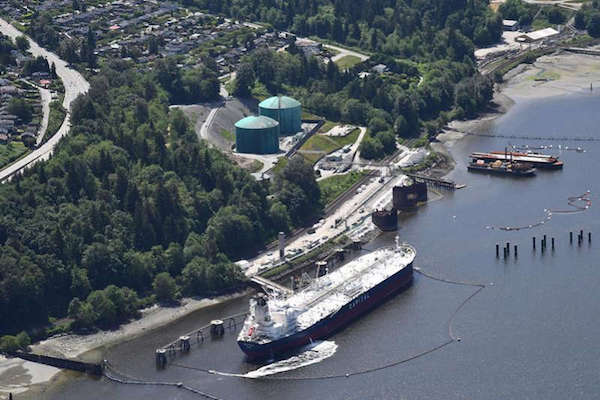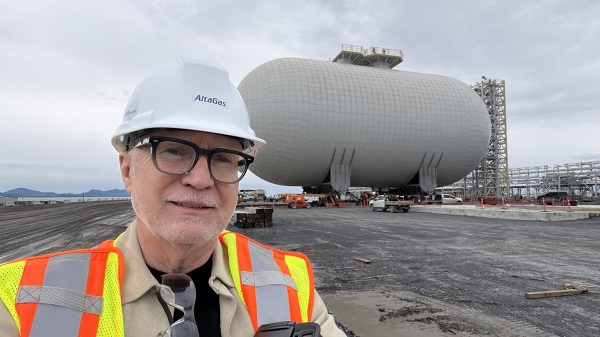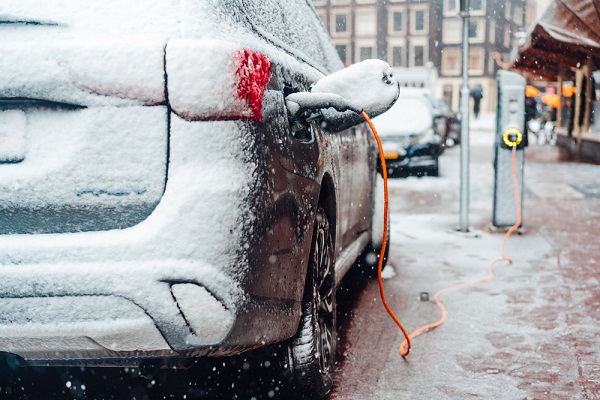Energy
Reports of the Impending Death of Petroleum Have Been Greatly Exaggerated

From EnergyNow.ca
By Jim Warren
There is a good chance climate activists smugly celebrating the collapse of conventional energy production within a generation are wildly mistaken. It is just as plausible that the time between today and ‘sunset’ for petroleum will run several decades beyond ‘net zero day’ in 2050. Actually, both predictions are suspect. History has shown people are rarely able to foresee conditions three or more decades into the future with any great precision.
Yet it seems sections of the investment community and the legacy news media assume our geopolitical future will be governed by the race to achieve net zero. They see the green transition as inevitable as death and taxes and presume oil will be sidelined accordingly.
A CBC news item that aired on March 16 boldly led with the prediction that the recently completed Trans Mountain pipeline is “likely the last new oil export pipeline the country will ever need.” The reporter was clearly caught up in a chicken and egg conundrum. He mused that due to declining production over the next decade we wouldn’t need any new pipelines. Here’s a thought, if increases in production do indeed taper off it will likely be because we can’t get enough pipelines built. Of course some CBC reporters and their fellow travellers in the climate alarmist camp never let logic get in the way of writing jubilant obituaries for the fossil fuel industries. One of the problems for conventional energy producers is that lots of people, including potential investors, have been drinking the same Kool-Aid as the media.
If the climate alarmists really have won the day, the window of opportunity is closing or has already closed on significant oil sands plant expansions, new pipelines to tidewater and any future boom in conventional oil production. After all, who wants to invest in infrastructure projects that will take a decade or more to be approved, could later be cancelled, or taxed into insolvency well before the end of their productive life spans?
No matter how long the window for viable investments remains open, one thing is clear—the Justin Trudeau government has already shortened it by a decade or more. During the eight year oil price depression that began in late 2014, new pipelines to tidewater were the one glimmer of hope for an improvement in the prices received by Canadian exporters. With more than 90,000 jobs lost in oil and gas production, manufacturing and construction by 2017, there were a lot of unemployed people in the producing provinces looking for a break. Northern Gateway, Energy East and Trans Mountain would of course allow Canadian producers to avoid the steep discounts they were subject to in the US for a significant proportion of their exports. The Trudeau Liberals cancelled any hope for that modestly brighter future.
Trans Mountain was the exception. It was the consolation prize to make up for the cancellations of Northern Gateway, Energy East and the Keystone XL. And yes, amazingly, the federal government finally got it built. It was touch and go. We were always just one bird nest away from another lengthy delay.
But wait, take heart. There is mounting evidence to suggest the hand wringing climate activists and cautious investors could have it all wrong. The goals of the green transition will probably take many more decades to achieve than they imagine.
In fact, recent events suggest the whole green transition project could actually be coming off the rails. Europe’s Green politicians are being clobbered at the polls while climate change skeptics from populist and conservative parties continue to attract voters and win elections. Green transition initiatives have been postponed and cancelled in several EU countries and the UK. The principal cause of the retreat is popular resistance to green transition initiatives that contribute to what is already an unacceptably high cost of living.
For instance, the Yellow Vests protests in France forced President Emmanuel Macron to forego a number of unpopular fuel tax measures including a carbon tax. But that wasn’t until after 11 people died and over 4,000 were injured as a result of the protests. The protests began in November 2018 and have continued sporadically to the present.
Protests by farmers in the Netherlands in 2019 beat back GHG reduction measures which would have restricted nitrogen fertilizer use and cut the national cow herd by one-half. Farmers refused to accept the assault on their incomes and plugged the country’s highways with their tractors. One of their demonstrations was reported to have caused 1000 km of traffic jams. In another protest they shut down Eindhoven airport for a day. Members of one of the more militant groups participating in the protests, the Farmers Defense Force, threatened civil war.
A new political party, the Farmer-Citizen Movement (Dutch: BBB), arose out of the Dutch farm protests. In March of 2023, the BBB won the popular vote in Netherlands’ provincial elections (they are all held on the same day) and the majority of seats in each of the country’s 12 provinces. The victory is all the more significant because the provincial governments choose who sits in the national Senate which has the power to block legislation. Protests by farmers over similar green transition projects have been occurring in France, Belgium and Germany.
The German government’s ambitious heat pump mandate had to be postponed and rethought. The ineptitude of environmentally-friendly bureaucrats who came up with the scheme was evident in the fact they still hadn’t figured out which type of heat pumps would work best under different conditions. For example, the heat pumps’ inability to operate effectively in cold weather was one of the details planners had overlooked. Additionally, they neglected to train enough technicians in heat pump installation to actually put them in people’s homes. Green politicians and their allies in government were blamed for the technical debacle and high costs for consumers. As a result, populists and likeminded conservative candidates have been defeating the Greens and Social Democrats in regional elections.
The October 2023 state elections in economically and politically powerful Hesse and Bavaria provided two of the more significant (and startling) losses in support of Germany’s three party governing coalition that includes the social democrats and the Greens. What the coalition parties lost, the right-wing populist Alternative for Germany (AfD) and conservatives won. (The Greens claim the AfD are “climate change denialists.”) The AfD is now the second largest party in terms of voter support in Hesse and the third largest in Bavaria. The online publication Energy Wire observed that the AfD platform featured concern for the flagging German economy, high energy prices, climate policy, the energy transition and immigration (in that order). More recently the Greens were the biggest losers in this May’s vote in the city state of Bremen. The Green’s 11.7% share of the vote was their poorest showing in 25 years.
Last year’s auction of UK government contracts for new offshore wind farms failed to receive a single bid. Under the auction scheme companies who purchased permits to build wind farms would receive a guaranteed premium price for the electricity they produced. The premium offered was too low to attract any interest. The Sunak government was simply not prepared to weather the consumer backlash that would accompany raising the guaranteed premium price high enough to attract bidders. Increasing the premium would require increasing electrical bills and/or taxes paid by British voters.
Melting glaciers are apparently not enough to convince some Europeans to open their wallets in support of achieving net zero. This applies even in the heart of the Alps in Switzerland. The 2020 Swiss referendum on a plan for achieving net zero GHG emissions by 2050 was soundly defeated. A significantly revised plan was later approved, but only after carbon taxes had been removed in favour of a carbon offset system and a number of other tax measures had been withdrawn. The Economist reported that one of the loudest lobby groups opposing the first referendum was the organization for Swiss resort and hotel owners. The carbon tax threatened to raise the cost of making artificial snow.
Europe’s Greens hoped to take a victory lap after recent increases in the number of solar power farms being built across Europe; especially in Germany. They have been woefully disappointed. Their promises about the thousands of new jobs that would be created by the transition to renewables proved empty and voters are not impressed. It turns out 95% of the solar systems installed in Europe are imported from Asia, mostly from China. With the exception of some local installation work, the lion’s share of the economic benefits and jobs go to Chinese firms.
No less embarrassing is the fact that one third of the essential components for Chinese solar systems are sourced from Xinjiang Province where manufacturers are known to be using forced labour. Members of the region’s Uyghur minority, who are being held prisoner in “reeducation camps,” provide the captive labour. Europe’s own solar panel producers are lobbying for relief in the form of trade restrictions on Chinese imports and/or EU subsidies. Solar system advocates in the west are between the proverbial rock and a hard place. To create the promised jobs will likely require stiff tariffs that will in turn increase the cost of solar energy and contribute to the public backlash over the already high cost of living.
Europe’s solar power dilemma echoes the French populist, Marine Le Pen’s, critique of global free trade: “Globalization is when slaves in China make things to sell to the unemployed in the west.” Le Pen came second in the last French presidential election. She has a shot at winning the next one which will be held three years from now. Le Pen is an EU skeptic who is unlikely to readily buy into its suite of exceedingly zealous GHG reduction targets and green transition policies; especially those relying heavily on foreign imports.
European auto makers have geared up their electric car production capabilities in anticipation of the EU ban on the manufacturing of new internal combustion passenger vehicles set for 2035. They are currently worried Chinese electric vehicle makers (EVs) are going to eat their lunch. The zippy little EVs made in China are far less expensive than European models. Chinese EV exports grew by 70% last year to just over $34 billion. As is the case with solar systems, the employment benefits associated with the transition to electric vehicles will be enjoyed in China not Europe. Apparently, European auto makers are frantically lobbying their governments to follow Joe Biden’s example and impose hefty tariffs on Chinese made EVs. If the car makers get their wish, jobs will be saved in Europe but the costs to European car buyers will be higher than they would be if they could buy Chinese autos. Europe’s EV problems involve the same sort of high costs versus jobs Catch 22 plaguing the EU’s solar system manufacturers. Whichever way things go, a lot of voters will be unhappy.
The growing list of failed and failing green transition initiatives is in part responsible for the surge in support for populist and conservative parties in Europe (Poland’s general election being a recent exception). And, most of Europe’s populist politicians are openly opposed to measures that increase taxes and the cost of living on behalf of combating climate change. The electoral success of the right-wing populist party, the Party for Freedom (Dutch: PVV) in the Netherlands’ November 2023 federal election is a case in point. The PVV is led by the infamous anti-immigration populist, Geert Wilders.
Wilders is not a climate change denier. He just doesn’t want to ruin the Dutch economy to combat it. Dutch environmentalists warn sea level rise caused by climate change warrants a significant reductions in GHG emissions; particularly in a country where 26% of the land is below sea level. Wilders’ solution is to just build the dikes higher.
The PVV won more seats than any other party in 2023 giving it the plurality but not a majority in the Dutch parliament. On May 16, four parties including the PVV and the Farmer-Citizen Movement (BBB) finally cobbled together a coalition government. Geert Wilders will become prime minister sometime this June. Obviously, neither the PVV or the BBB are fans of the EU’s climate change mitigation policies.
Closer to home, should Donald Trump win this November’s U.S. presidential election, progress toward net zero will virtually cease in the US for at least the next four years. And, in Canada, if current federal polling numbers hold up until Trudeau finally calls an election, we can expect the cancellation of a number of Liberal environmental initiatives; presumably, the No More Pipelines Bill and the carbon tax in particular.
The foregoing examples of recent setbacks, along with stories told by the tea leaves, indicate the road toward a green transition will be pitted with potholes and subject to roadblocks. Achieving net zero by 2050 is far from a slam dunk. Oil production is just as likely to prove far more robust than the environmental movement imagines.
Then again, if science figures out how to contain fusion reactions for extended periods of time in the next decade or so, all bets are off. Nobody knows for certain what the future holds when it comes to geopolitical conditions and energy production thirty to fifty years from today. The economist, John Maynard Keynes, claimed the only consolation for those foolishly trying accurately to predict events over the long run, was that “In the long run we are all dead.”
Energy
Tanker ban politics leading to a reckoning for B.C.

From Resource Works
That a new oil pipeline from Alberta to BC is being aired by Ottawa and pushed by Alberta has, in turn, critics eagerly pushing carefully crafted scare stories.
Take the Green Party’s Elizabeth May, for one: She insists that oil tankers leaving Prince Rupert would be sailing through “Canada’s most dangerous waters and the fourth most dangerous waters in the world.”
First, this “dangerous waters” claim is unsubstantiated, unproven, and hyperbolic. It is apparently based on a line in a 1992 federal guide to marine-weather hazards on the west coast, but it is not credited or supported there.
Second, who says a new oil pipeline would go to Prince Rupert? No destination is specified in the memorandum of understanding published by Ottawa and Alberta.
It speaks of a commitment to “enable the export of bitumen from a strategic deep-water port to Asian markets.”
Energy Minister Tim Hodgson: “There is no route today. Under the MoU, what (Alberta) would need to do is work with the affected jurisdiction, British Columbia, and work with affected First Nations for that project to move forward. That’s what the work plan in the MoU calls for.”
First Nations concerned
Now, the MoU does say that this could include “if necessary” a change to the federal ban on oil tankers in northwest BC waters.
Some First Nations are strongly fighting the idea of oil tankers in northern BC waters citing fears of a catastrophic spill. The Assembly of First Nations (AFN), for example, is calling for the Canada-Alberta pipeline MoU to be scrapped.
“A pipeline to B.C.’s coast is nothing but a pipe dream,” said Chief Donald Edgars of Old Massett Village Council in Haida Gwaii.
And AFN National Chief Cindy Woodhouse Nepinak said: “Canada can create all the MOUs, project offices, advisory groups that they want: the chiefs are united. . . When it comes to approving large national projects on First Nations lands, there will not be getting around rights holders.”
Alberta group interested
But the Metis Settlements of Alberta say they’re interested in purchasing a stake in the proposed pipeline and want to “work with First Nations in British Columbia who oppose the project.”
The Alberta government’s Indigenous loan agency says a new oil pipeline to the BC coast could deliver “significant” returns for Indigenous Peoples.
Alberta Premier Danielle Smith has suggested the pipeline could bring in $2 billion a year in revenue, and that it could be as much as 50 per cent owned by Indigenous groups — who would thus earn $1 billion a year,
“Can you imagine the impact that would have on those communities in British Columbia and in Alberta? It’s extraordinary.”
And we note that in 2019 the First Nations-proposed Eagle Spirit Energy Corridor, which aimed to connect Alberta’s oilpatch to Kitimat, garnered serious interest among Indigenous groups. It had buy-in from 35 First Nations groups along the proposed corridor, with equity-sharing agreements floated with 400 others. (The project died with passage of the tanker ban.)
Vancouver more likely
More recent chatter, including remarks by BC Premier David Eby, would suggest oil from a new pipeline would more likely be through Vancouver, rather than via Prince Rupert or Kitimat BC. And tankers have been carrying oil from the Trans Mountain Pipeline System’s Burnaby terminal since 1956 — with no spills.
Oft cited by northern-port opponents is the major spill of 258,000 barrels of crude oil (more than 40 million litres) from the tanker Exxon Valdez, which ran aground in Alaska’s Prince William Sound in 1989.
The resulting spill killed native and marine wildlife over 2,100 km of coastline. The U.S. National Transportation Safety Board found that the spill occurred due to human error. It cited a tired third mate on watch, and noted the captain had an alcohol problem.
But the Exxon Valdez was a single-hull tanker. Its spill led to the phasing out of single-hull tankers, replaced in the ensuing 36 years by new generations of double-hull vessels (with an inner and outer hull separated to contain spills if the outer hull ruptures), new tanker safety rules — and new ways of dealing with the far-fewer spills.
Among those new ways is the Western Canada Marine Response Corporation: “Our mandate is to ensure there is a state of preparedness in place when a marine spill occurs and to mitigate the impacts on B.C.’s coast. This includes the protection of wildlife, economic and environmental sensitivities, and the safety of both responders and the public.”
What about LNG carriers?
At the same time, fear-mongers are actively flogging scare stories on social media.
One opposition group sees future LNG carrier traffic along the southern BC coast as potentially numbering “in the realm of 800+ transits a year.”
Eight hundred a year? BC Ferries runs more than 185,000 a year. And the ferries don’t have tethered tugs helping them to get safely from LNG terminals. And they don’t have BC Coast Pilots on the bridge to keep progress safe. Oil tankers leaving the Port of Vancouver have both.
As marine captain Duncan MacFarlane of LNG Canada in Kitimat says: “LNG carriers are some of the most sophisticated ships in the world…Once loading operations are complete (at LNG Canada), three BC Pilots will join the ship and start navigating up the Douglas Channel, which is approximately 159 nautical miles out to the Prince Rupert pilot station.”
“LNG Canada has partnered with HaiSea Marine, which is a company formed between the Haisla Nation and Vancouver-based SeaSpan, to provide two escort tugs and three harbour-assist tugs to safely move the vessel out of the Douglas Channel…once the vessel drops the pilots at Prince Rupert, it starts a seven- to ten-day voyage to its discharge port. To assist with this, they’ll use satellite navigation, weather routing, and a variety of other technologies to get to their port the safest and most efficient way.”
The same would apply to oil tankers from any northern port in BC.
BC’s tanker-safety record
As the small-c conservative Fraser Institute points out: “Pipelines are 2.5 times safer than rail for oil transportation, and oil tankers have [the] safest record of all.”
And it adds: “The history of oil transport off of Canada’s coasts is one of incredible safety, whether of Canadian or foreign origin, long predating federal Bill C-48’s tanker ban. . . .new pipelines and additional transport of oil from (and along) B.C. coastal waters is likely very low environmental risk. In the meantime, a regular stream of oil tankers and large fuel-capacity ships have been cruising up and down the B.C. coast between Alaska and U.S. west coast ports for decades with great safety records.”
This last refers to the 200-230 tankers a year that now carry crude oil from Alaska through Canadian waters south of Haida Gwaii and then down BC’s Inside Passage or outer coastal waters to Juan de Fuca Strait and Washington refineries.
While these tankers do not transit Hecate Strait (the north end of which is the area of concern about spills from tankers from Prince Rupert or Kitimat) all these US tankers are double-hulled, must report positions, speeds and routes in real-time, must carry certified pilots, must use traffic-separation routes (like traffic lanes), and must slow to 11 knots in sensitive areas.
And as Pipeline Action says: “Canada is not inferior — If Norway can move tankers safely through fjords, if Japan can operate in some of the busiest waterways on Earth, if Alaska balances ecological protection with responsible shipping and if Eastern Canadian ports manage tankers every day, then Canada’s West Coast, with its governance standards, technical capacity and Indigenous partnership potential, can certainly do so.”
Resource Works News
Energy
Meet REEF — the massive new export engine Canadians have never heard of

From Resource Works
A Prince Rupert megaproject is rising quietly on the coast, fuelled by Montney gas and poised to reshape Canada’s trade footprint from Asia to Alberta.
Most Canadians know who Connor McDavid is.
Most Canadians know who Connor Bedard is.
And, well … most Canadians know who Howie Mandel is, right?
Household words.
But do any Canadians know what REEF is? Probably not.
The Ridley Island Energy Export Facility project, a large-scale terminal near Prince Rupert, B.C., being built by AltaGas to export liquefied petroleum gas (LPG) and other bulk liquids to global markets.
Did you know it is providing valuable propane to Japan? No, not for barbecues, but for crucial energy demands in the Asian nation.
Japan uses propane (LP gas) for a wide range of purposes, including household use for cooking, water heating, and room heating, as well as for a majority of taxis, industrial applications, and as a raw material for town gas production.
Construction is progressing, with a target startup around the end of 2026. The project involves building significant infrastructure, including large storage tanks.
And it just so happens that Resource Works CEO Stewart Muir, paid a visit this past week to get a close-up look at a part of Canada’s export story that almost nobody talks about: a brand-new accumulator tank built to hold chilled propane and butane.

The “triple-word-score” of resources
“It’s the largest of its kind anywhere. Two more are on the way, and together they’ll form a critical piece of the AltaGas Ltd. REEF project,” Muir said in a report.
”What stood out to me is the larger pattern: projects like this only happen because of the crown jewel of the B.C. economy — the Montney Formation.”
“It’s the triple-word-score of Canadian resource development: LNG, valuable natural gas liquids like propane, and the diluent streams that help unlock Canada’s single biggest export category, crude oil.”
Like the oilsands, the industry has long known about the Montney formation, which stretches 130,000 square kilometres in a football-shaped diagonal from northeast British Columbia into northwest Alberta.
According to CBC News, underneath this huge tract of land, the National Energy Board (NEB) estimates there’s 90 billion barrels of oil equivalent (boe), most of it natural gas. That’s more than half the size of the oilsands, yet the Montney has received only a fraction of the attention, at least from the public at large.
For oil and gas types, the gold rush is on.
Without question, and despite the ire of green groups who seem to be against any kind of resource development in Canada, the Montney is the quiet force multiplier behind local jobs, municipal tax bases, and the national balance of trade.
And it’s all being done at the highest environmental standard, with producers like Tourmaline Oil Corp already posting a 41% reduction in CO2 emission intensity and a target of 55% less methane emission intensity.
A strategic corridor under pressure
“Congrats to AltaGas for pushing this project forward, and a nod as well to other major employers on the North Coast — Trigon, CN and Pembina”, writes Muir.
“Quietly and steadily, they’re building the future prosperity of Canadians. And thanks to Mayor Herb Pond, who took the time to walk us through the regional dynamics that make this corridor such a strategic asset.”
Muir was gobsmacked by the size of the project. Sources say Alberta’s midstream bottleneck and rapid growth of shale oil and gas exploration and production, has created an absolute glut in ethane, propane and butane. Ridley Island takes this glut and transports it to the Prince Rupert region by railcar and exports to Asian markets.
Ridley Island’s current export capacity of 92,000 bpd is undergoing aggressive expansion to growth by another 115,000 bpd over the next few years in two more phases of construction.
Resource Works News
-

 Automotive2 days ago
Automotive2 days agoThe $50 Billion Question: EVs Never Delivered What Ottawa Promised
-

 C2C Journal2 days ago
C2C Journal2 days agoWisdom of Our Elders: The Contempt for Memory in Canadian Indigenous Policy
-

 Alberta2 days ago
Alberta2 days agoAlberta introducing three “all-season resort areas” to provide more summer activities in Alberta’s mountain parks
-

 Agriculture2 days ago
Agriculture2 days agoGrowing Alberta’s fresh food future
-

 Censorship Industrial Complex2 days ago
Censorship Industrial Complex2 days agoConservative MP calls on religious leaders to oppose Liberal plan to criminalize quoting Scripture
-

 National17 hours ago
National17 hours agoCanada’s free speech record is cracking under pressure
-

 Digital ID9 hours ago
Digital ID9 hours agoCanada considers creating national ID system using digital passports for domestic use
-

 Business19 hours ago
Business19 hours agoAlbertans give most on average but Canadian generosity hits lowest point in 20 years









